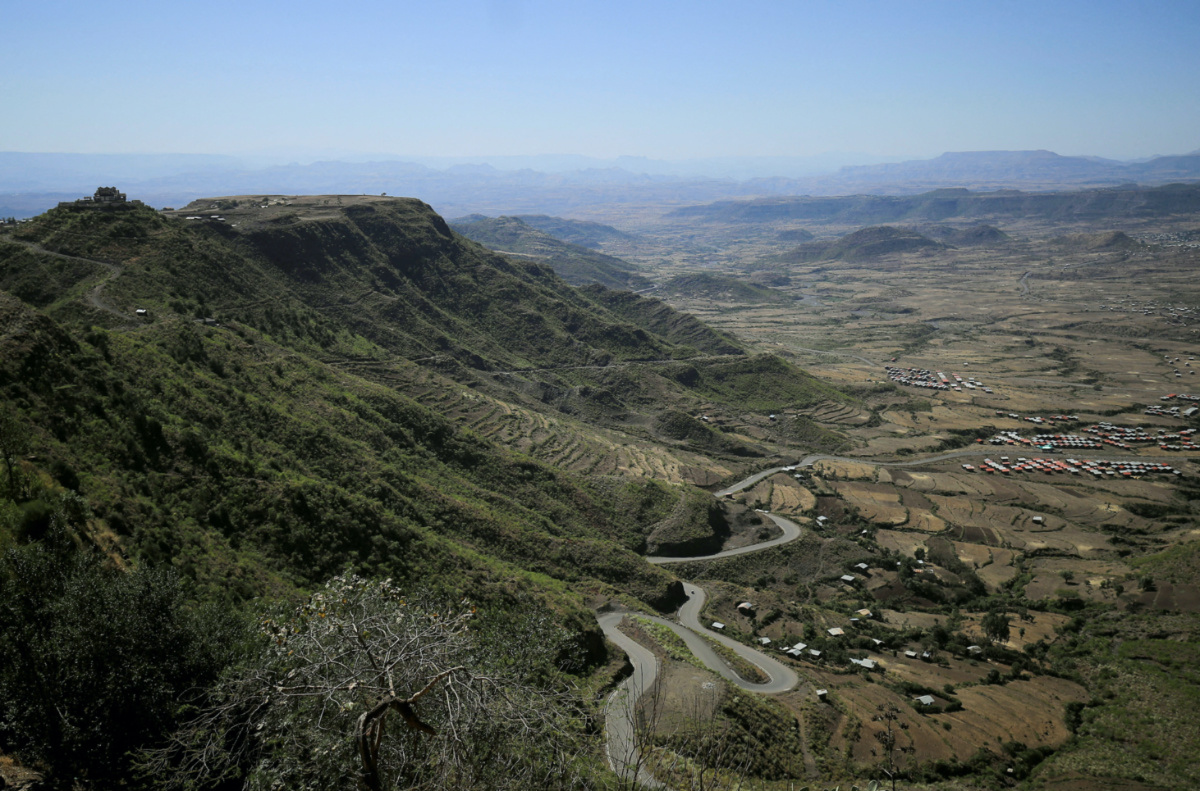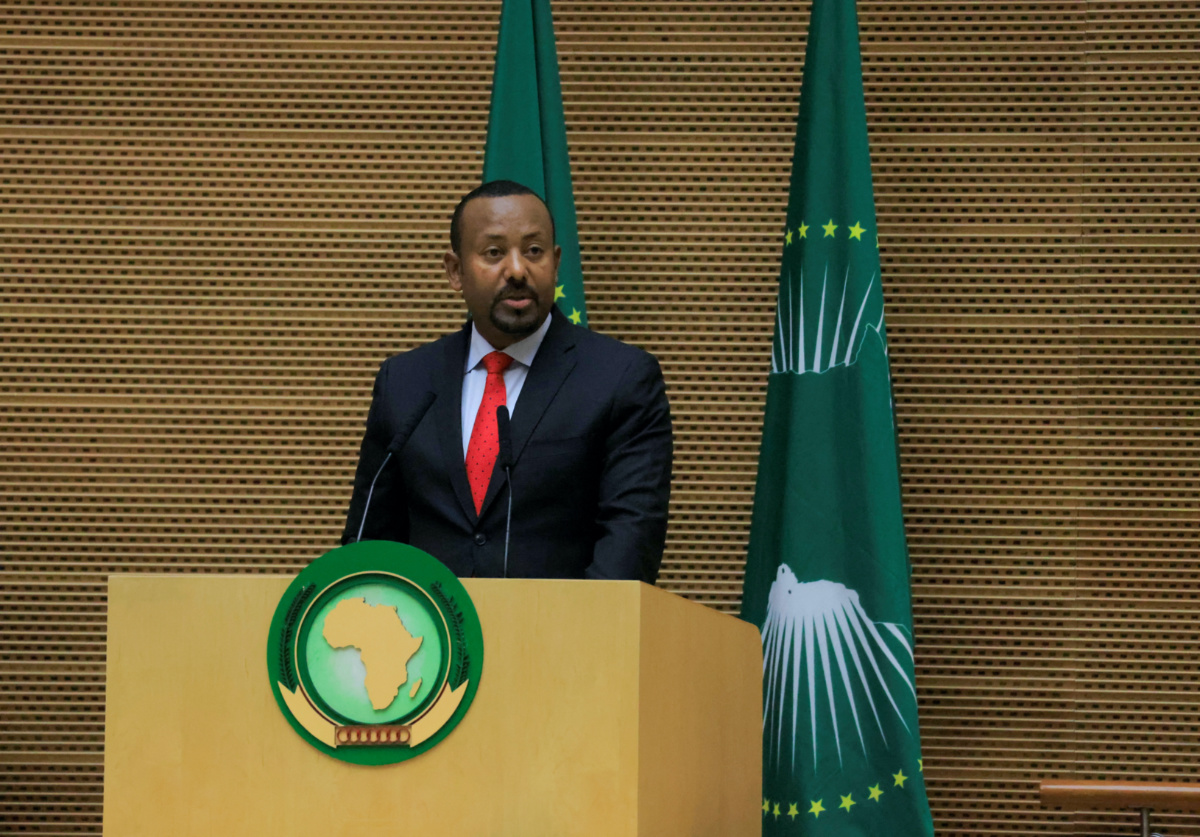Nairobi, Kenya
Reuters
When Ethiopia’s government and rebellious forces from the Tigray region agreed in November to end their conflict, diplomats hailed the peace deal as a new dawn for Africa’s second most populous nation.
For many in the Amhara region, which neighbours Tigray and fought in support of federal forces during the war, the deal was something very different – a stab in the back whose failure to account for Amhara concerns portended another war.

A partial view of the Lalibela town in the Amhara Region, Ethiopia, on 25th January, 2022. PICTURE: Reuters/Tiksa Negeri/File photo
Nine months later, that forecast looks to be coming true. Fierce fighting broke out last week across Amhara between local Fano militiamen and federal forces, leading the government to declare a state of emergency and rush troops to the front lines.
As clashes rage across cities, both sides appear to agree on the stakes – nothing less than the survival of Prime Minister Abiy Ahmed’s government.
Fano is an informal militia with no publicly-known command structure that draws volunteers from the local population.
“The Fano, with the support of farmers and Amhara public will attempt to defeat the federal security forces and their alliance and ultimately remove Abiy from power,” said Tewodrose Tirfe, chairman of the Amhara Association of America, a lobby group that supports the Fano cause.
Temesgen Tiruneh, Ethiopia’s spy chief who oversees enforcement of the state of emergency, said that Fano’s goal was “overthrowing the regional government by force and then advancing to the federal system”.
Spokespeople for Abiy and Ethiopia’s government did not respond to requests for comment. Fano representatives could not be reached for comment.
Major threat
With its vast size and population and its position as one of Africa’s largest economies, Ethiopia carries huge weight in the continent’s geopolitics. Its problems, whether wars or droughts, tend to have consequences beyond its borders. It has also been a major security partner for Western countries in the volatile Horn of Africa region.
The two-year war in Tigray wrought devastation, killing tens of thousands of people. It drew in troops from neighbouring Eritrea and forced tens of thousands to flee into eastern Sudan.
In that war, federal forces faced battle-hardened fighters loyal to Tigray’s ruling party, who at one point advanced hundreds of kilometres towards the capital Addis Ababa.
While Fano is not nearly as well-equipped or organised, it could seriously threaten the government if its struggle draws widespread support, analysts said.
Amhara is Ethiopia’s second most populous region, with more than three times as many people as Tigray, and parts of Amhara lie just only about 50 kilometres from Addis Ababa.
“Abiy’s government is unlikely to survive a sustained mass uprising in the Amhara region, especially given the mounting political and economic crisis around the country,” said Addisu Lashitew, a fellow at the Brookings Institution think tank.
Amhara residents said Fano fighters had inflicted some losses on the better-equipped federal forces, and the government’s Temesgen acknowledged on Monday the militiamen had captured some towns.

Ethiopian Prime Minister Abiy Ahmed attends the 60th anniversary of the Organization of African Unity/African Union at the African Union Commission Headquarters in Addis Ababa, Ethiopia, on 25th May, 2023. PICTURE: Reuters/Tiksa Negeri/File photo
Building anger
Abiy came to power in 2018 promising to bring Ethiopians together across ethnic and regional lines and won a Nobel Peace Prize in 2019 for his peacemaking efforts with Eritrea.
After several tumultous years, he finally seemed to be making some progress in the past year toward calming internal conflicts.
Following the Tigray deal, his government held preliminary talks with rebels in the Oromiya region, Ethiopia’s largest, about ending a decades-long insurgency.
But anger was building in Amhara, where the Tigray deal deepened existing suspicions of Abiy’s government.
We rely on our readers to fund Sight's work - become a financial supporter today!
For more information, head to our Subscriber's page.
Despite the crucial backing to federal forces that Fano fighters and regional security forces provided during the conflict, Amharas from outside Abiy’s political party were not included in the negotiations.
The deal confirmed Amhara hardliners’ worst fears. It said the status of lands claimed by both Amhara and Tigray, which Amhara forces captured during the war, should be resolved “in accordance with the constitution”.
The constitution, drafted by a former Tigrayan-led administration, recognises the lands as belonging to Tigray.
Subsequent events, including arrests of Amhara activists and militiamen, raised tensions. Then in April, Abiy ordered that regional security forces be integrated into the police or federal military, prompting a week of violent demonstrations.
Protesters saw the move saw as aimed at undermining Amhara’s security, a charge the government denied.
Now that armed conflict has broken out, analysts said they expected the response to be uncompromising.
“Abiy is a tactician in consolidating power,” said Befekadu Hailu, a human rights activist and writer in Addis Ababa. “I think this is, therefore, just another one of those struggles for him.”






